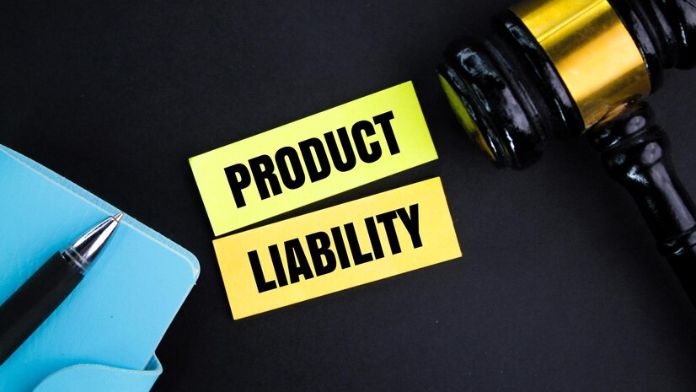The Role of Product Liability Lawsuits in Ensuring Safe Consumer Goods

Product liability lawsuits are crucial in holding companies accountable when their products cause harm. Imagine buying a household appliance, and after a few uses, it catches fire, damaging your property or injuring you.
A product liability lawsuit may be your only recourse to seek justice and compensation. These lawsuits aren’t just about getting financial compensation; they help ensure businesses produce safe consumer goods.
What Is a Product Liability Lawsuit?

A product liability lawsuit happens when a consumer sues a company for selling a defective product that caused harm. Different types of defects can trigger these lawsuits.
First, there’s a design defect, which occurs when the product’s design itself is inherently dangerous. Then, we have manufacturing defects, which happen during the production process.
Finally, there’s a failure to warn when companies don’t provide adequate instructions or warnings about potential hazards. Product liability lawsuits are a powerful tool for consumers to protect themselves and others from unsafe products.
They not only ensure compensation for victims but also push manufacturers to improve their safety standards. This leads to better, safer products on the market for everyone.
Real-Life Example: The Ford Pinto Case
One of the most famous product liability lawsuits involved the Ford Pinto.
In the 1970s, the Pinto was known for having a design defect that made its fuel tank vulnerable to explosions in rear-end collisions. Several people were seriously injured, and some even died as a result. Ford was taken to court for selling cars with a deadly flaw.
This lawsuit not only compensated the victims but also sparked changes in automobile safety standards. Ford eventually recalled the Pinto, and car manufacturers learned a valuable lesson about prioritizing consumer safety.
Why Product Liability Lawsuits Matter
Product liability lawsuits are not only about pointing fingers. They have a larger purpose in society as they promote higher safety standards.
Manufacturers are more cautious during production and design. They know that any kind of mistake can make them accountable. However, consumers are more protected as the companies stay under a lot of pressure to make sure all their products are safe.
Because of this, there is a kind of ecosystem that stops unsafe products from reaching the market. And somehow, if they do, they are removed from the market quickly. For instance, when hoverboards came into the market, there were multiple reports that they were catching fire.
A lot of consumers filed lawsuits, and that forced the manufacturers to take those dangerous products of the market and improve their designs. With product liability lawsuits, defective products would not leave the market and put people more at risk.
Types of Product Liability Cases
There are three main types of product liability cases:
1. Design Defect Cases
These cases involve a flaw in the product’s design that makes it inherently dangerous. Even if the product is made perfectly according to its design, it can still pose a risk to consumers.
Take, for instance, the Ford Pinto case mentioned earlier. The design itself made the fuel tank prone to explosion, which led to several deaths and injuries.
2. Manufacturing Defect Cases
These cases focus on flaws that occur during the manufacturing process. The product’s design might be safe, but something goes wrong during production.
For example, if a batch of baby car seats is produced with faulty straps, they are considered as manufacturing defects. Even if the car seat was designed to be safe, the defect that occurred during production could still cause harm.
3. Failure to Warn Cases
These cases arise when companies don’t provide adequate warnings or instructions about potential dangers. Let’s say you buy a bottle of cleaning solution, and there’s no warning label about the risks of mixing it with another common household product.
If someone gets hurt because they weren’t warned, the company could face a failure to warn lawsuit. These lawsuits ensure that manufacturers properly inform consumers of any risks associated with using their products.
The Impact of Product Liability Lawsuits on Consumers

Product liability lawsuits have a direct impact on everyday consumers.
By holding companies accountable, these lawsuits push businesses to create safer products. In turn, consumers benefit from better safety standards, more transparency, and higher-quality products.
Imagine if product liability lawsuits didn’t exist. There would be less incentive for manufacturers to ensure their goods are safe.
Without the threat of legal action, companies might cut corners, putting consumer safety at risk. Product liability lawsuits keep businesses in check, ensuring they prioritize the well-being of their customers.
Legal Challenges in Product Liability Lawsuits
While product liability lawsuits are essential, they’re not without challenges.
For one, it can be tough to prove that the product was defective and that the defect directly caused harm. Companies often have legal teams ready to defend their products, making it difficult for individual consumers to navigate the legal system.
Additionally, there’s the question of whether the product was used as intended. If a consumer misuses a product in a way that’s not covered by the manufacturer’s instructions, it can complicate the case.
That’s why having an experienced attorney is crucial for those looking to file a product liability lawsuit. They can help gather evidence, navigate legal obstacles, and ensure that victims receive the compensation they deserve.
Personal Experience with Product Liability
A close friend of mine once faced a product liability issue with a children’s toy.
They marketed the toy as safe for toddlers. However, after just a few hours of use, it broke apart. It left sharp pieces that could easily injure a child. Thankfully, no one was hurt, but it was a wake-up call for my friend.
She filed a product liability lawsuit against the manufacturer. Not only did she receive compensation, but they also forced the company to recall the toy. It was a clear example of how these lawsuits can protect consumers and ensure that unsafe products are removed from the market.
Filing a Product Liability Lawsuit
If a defective product has harmed you, you may wonder how to file a product liability lawsuit.
The first step is to gather evidence. This could include the product itself, medical records, and any documentation that shows how the product caused harm. Next, you’ll need to find an attorney specializing in product liability cases. They can guide you through the legal process and help you build a strong case.
It’s important to act quickly, as there are often time limits on when you can file a lawsuit. Each state has its own statute of limitations, so make sure you’re aware of the deadlines.
Conclusion
Product liability lawsuits are an essential tool for consumers. It ensures that defective products are held accountable. Whether it’s a design defect, manufacturing flaw, or failure to warn, these lawsuits push businesses to create safer products and maintain higher standards.
By holding manufacturers accountable, consumers can feel safer using everyday products, knowing that systems are in place to protect them. If any defective product has caused you or any of your close ones any harm, you can explore your legal options through product liability lawsuits.













